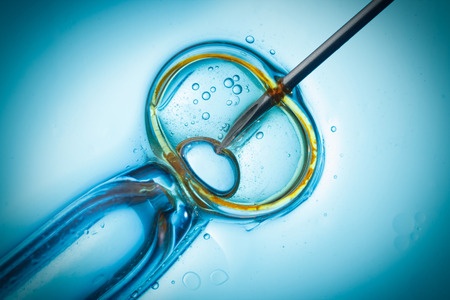Writing in The BMJ today, researchers describe a new calculator that has been developed to estimate the individualised chances of couples having a baby, both before and after first IVF treatment, and over multiple cycles.
Available online, the calculator considers specific characteristics of couples and treatment information to predict cumulative chances over up to six IVF (in vitro fertilisation) or ICSI (intracytoplasmic sperm injection) cycles.
The researchers, led by David McLernon from the University of Aberdeen, explain it will aid "clinicians communicating to couples their personalised chances of a live birth over an entire package of IVF treatment."
They say it will also "help to shape couples’ expectations allowing them to plan their treatments more efficiently and to prepare emotionally and financially.”
The online tool is based on data from the Human Fertilisation and Embryology Authority (HFEA) which collects information on all licensed fertility treatments in the UK.
Data were analysed on 113,873 women, using their own eggs and partner’s sperm in 184,269 complete cycles, who started IVF or ICSI treatment between 1999-2008.
Results show that independent of treatment the chances of a couple having a baby declined after the woman’s age of 30, and decreased with increasing duration of infertility.
After transfer of a fresh embryo in the first cycle, aside from the woman’s age, increasing number of eggs collected (up to 13 eggs), embryo cryopreservation and stage of embryo transfer were the next best predictors of having a baby.
For example, before treatment, a 30 year old woman with two years of unexplained infertility has a 46% chance of having a baby from the first complete cycle of IVF and a 79% chance over three complete cycles.
If she then has five eggs collected in her first complete cycle followed by a single cleavage stage embryo transfer, with no embryos left for freezing, her chances change to 29% and 59%, respectively.
It’s the first model to provide cumulative estimates over multiple complete IVF cycles, which is important because the first attempt does not always work and the increase in frozen embryo use means that women have further attempts in that one complete cycle.
Clinicians can use the predictions when communicating a couple’s chances before treatment begins, and then use revised predictions to couples about their future chances over multiple cycles.
The researchers caution that some potentially important characteristics of patients, such as BMI, smoking and alcohol intake and basal follicle stimulating hormone levels, were not available when developing the tool. These factors may have improved the accuracy of the individual chances of having a baby.
Furthermore, the model should not be used to make decisions around whether or not couples should have IVF treatment, because it has not been evaluated for this purpose, and will need to incorporate more data than what is currently available.
They conclude: “These are the first models to predict individualised chances of live birth over a course of complete IVF cycles. The results are relevant not only for individual couples and their clinicians, but also for funders and policy makers in determining access to state or insurance funded IVF.”


